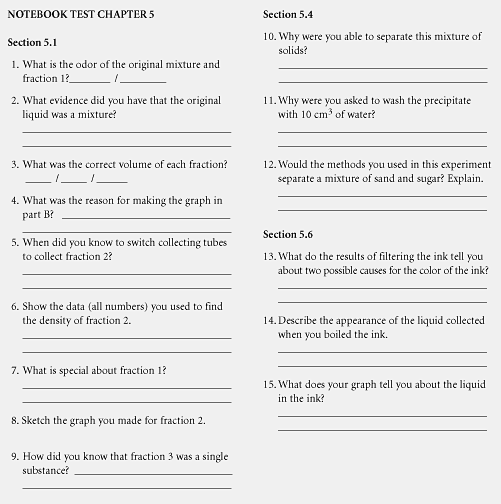 |
|

IPS Notebooks, Two Alternatives
Bill Atherton
Wellesley Middle School
Wellelsey, MA 02481
One of the more daunting aspects of IPS, for neophyte and veteran teachers alike, is the amount of time required for correcting students' laboratory notebooks. Let's assume that students' notebooks are collected for grading at least twice during a nine- or ten-week marking period. Then, in each marking period, an IPS teacher with five classes should expect to spend two to three hours each weekend correcting a set of laboratory notebooks.
Of course it is imperative that students maintain a complete and accurate record of their activities in the laboratory. However, it may not always be necessary to collect students' notebooks in order to verify this. I would like to suggest two alternative approaches that are used by the IPS teachers in our school.
For many years, IPS teachers in our school have been alternating notebook collections with notebook tests. These tests accomplish the same purpose as the notebook collections, i.e., they allow teachers to determine whether students have included key points in their laboratory notebooks. Of course, students are permitted to refer to their notebooks to answer the questions on the tests.
Notebook tests may contain a range of question types. For example, for the Density of Solids experiment, there might be a question such as, "What were the dimensions of the slab and the volume that you reported?" This question assesses whether the student is aware that the volume of the slab is reported with two significant digits, while that of the cube is reported with three significant digits. The tests may also contain simpler questions that ask students to write the purpose or the class conclusion for a particular experiment.
The tests developed at our school contain about 20 questions. We have found that this number is more than enough to evaluate all the experiments for a chapter. Even teachers new to this approach will soon be framing questions that address the major points they look for when reading students' notebooks. An example of a test for Chapter 5 is shown below.

A second approach that I have used involves peer review of notebooks. When I use this procedure, I am targeting specific experiments rather than seeking an overview of a student's notebook for a chapter. I begin by asking students to swap notebooks with a student other than their lab partner. I then provide them with a checklist (see below) on which they simply check yes or no depending on whether the notebook they are reading contains the correct information.
Before students use the checklist, I review with them the correct results for each step, so that they will look for the appropriate information. After the students have completed the checklists, they record the total number of yes's and no's on the sheet. The checklists are then returned, along with the notebooks, to the notebooks' owners. The students spend a few minutes reviewing the checklists to see whether there are any disagreements, and then the checklists are collected. It's a good idea to look at a couple of notebooks to ensure that the procedure is being followed properly. Since the students who complete the checklists write their names on them, you will be monitoring their work also.
There is no substitute for a teacher's carefully reading students' laboratory notebooks and writing comments in them. When there isn't time to do so, teachers may find the suggestions described above to be valuable ways to provide students with feedback.
